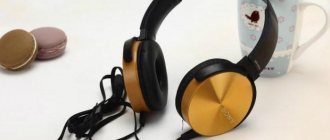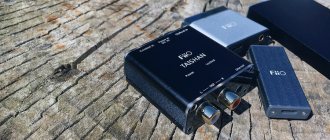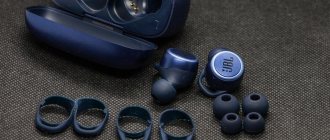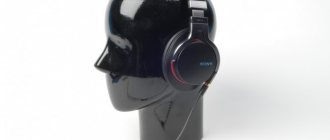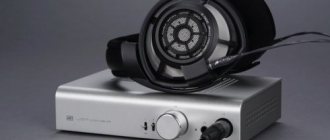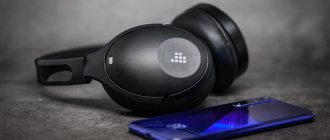In the modern world, it is impossible to imagine a person without headphones. They have become a part of everyday life, people use them at home and at work, listening to their favorite music. With such active use, the device can easily fail. In this case, repairs and replacement of structural parts may be required.
Of course, you can contact a service center and have the headset repaired, but most often this is expensive and takes a lot of time. Today in the article we will look at a headphone disassembly diagram using the example of the famous jbl brand. If you also want to know how to disassemble and open headphones, we recommend reading the information below.
Let's use the pliers
Tricks with a knife will not be enough, and to disassemble the earphone you will have to turn to pliers for help:
If you use standard pliers, then there will be nicks on the earphone, so it is advisable to use pliers with flat noses without teeth. But even with these, you can damage the earphone, for example, in my case, the coating came off a little from the earcups - some kind of varnish, the existence of which I didn’t even suspect, so to be extra careful, it’s better to press with a cloth.
How to disassemble vacuum headphones
If there is a breakdown of the vacuum headset near the speaker, you will need to disassemble it. The algorithm of your actions should be as follows:
- Locate the seam on the earphone body. It must be influenced with a knife or other thin but strong element. In order for the seam to open onto the body, you can press a little with pliers.
- When the case opens you can see the inside of the earphone. This is a speaker with contacts. Using a soldering iron, disconnect the damaged wires, but first of all you need to mark the color of the insulation. Use a marker to avoid confusion later.
- You will need to cut off the non-working element from the common headset cable. Strip the wires from the working wire and solder them to the speaker contacts. Carefully follow your markings on the insulation.
To diagnose whether the work was done correctly, connect the headset to the gadget and turn on the music. If everything works as expected, glue the half of the disassembled case together. Using the same principle, you can disassemble a Bluetooth headset.
Volume control problems
How to fix headphones if you have problems with the volume control in the form of loss of sound or crackling? In this case, you can use graphite lubricant to apply it to the resistive layer to restore contact. After this, the headset should function without problems.
If after lubrication the headset continues to work poorly, then the regulator needs to be replaced with a new one.
Thus, in most cases, before you run out and buy a new headset, you can repair it yourself. To do this, you will need a soldering iron with a thin tip and skills in handling it.
In this article we will take a closer look at how to disassemble headphones of different designs (including wireless) using the example of popular brands (JBL, Sony, Samsung, etc.)
- Full-size on-ear headphones, using the example of wireless Beats and wired Sony;
- Vacuum headphones using Phillips as an example;
- Earbuds (Apple EarPods);
Classification
The principle of operation of headphones is similar to the operation of loudspeakers, however, due to the fact that they emit sound vibrations inside a small closed volume of the human ear (auricle), their power is about 0.001-0.1 W.
Structurally, all headphones consist of two speakers, which:
- connected to each other by means of a flexible plate (headband) that holds them on the user’s head;
- are inserted directly into the listener's ears.
The domestic market is filled with a wide variety of models, differing from each other not only in appearance, but also in design. So, the headset is classified according to:
- method of sound transmission;
- designs;
- fastening;
- connector for connecting to a sound source;
- type of emitter, etc.
By sound transmission method
Based on the methods of reproducing sound signals, headphones are divided into wireless and wired. Nowadays, almost all headphones used for high-quality (professional) sound transmission require a connection to the signal source via wires. The wireless headset communicates with the sound source using modern technologies (IR radiation, Bluetooth) or via radio. They often have a short range and sound bad.
By design
Structurally, there are 4 types of accessories, depending on the location on the auricle:
- inset – located in the ears;
- intracanal (otherwise known as vacuum) – located deep in the auditory canals;
- overhead – cover sinks;
- full-size (monitor) – cover the ears entirely.
By fastening
In-ear and vacuum headphones (eardrops) are held on the head by earbuds that are inserted into the ears. On-ear and full-size headphones are equipped with a special headband that connects the earcups to each other. It may look like a vertical or occipital arch. In this case, the cable connecting the headphones to the sound source can be connected to each of the phones or to one of them. In the latter case, the second cup is connected to the first by a piece of wire that is hidden in the headband of the phones.
By connector
The headphones are connected to the sound source using Jack, Mini-jack or Micro-jack connectors. New generation headphones are equipped with USB, mini-USB, micro-USB or Tipe-c connectors.
By emitter
The most important component in any type of headphone is the sound emitter. Its work is based on the use of a membrane. So, on this basis, three types of headsets are distinguished.
- The membrane with the attached coil and wire is in the radiation field of a permanent magnet. When the fields propagated by the coil and the permanent magnet interact, the membrane vibrates, causing sound waves that follow the range of the electrical signal (dynamic emitters). Headphones with this type of emitters are most common on the domestic market.
- A membrane arranged between two electrodes. It is thin and ultra-sensitive and provides high fidelity sound reproduction (electrostatic drivers). To connect to the standard output of a sound-reproducing device, such headphones require a special docking station. Headphones with this type of emitters are distinguished by high sound quality (the reproduced frequency band can exceed 40,000 Hz).
- Membrane with applied conductive tracks. It is made of a thin film that vibrates inside a lattice assembled from bar magnets (isodynamic emitters).
Some parameters of popular headphones are shown in the table.
| Model/type of headphones | Options | ||
| Emitter type | Sound transmission | Connector type | |
| Philips SHD 8600/overhead | Dynamic | 2.4 GHz radio channel | — |
| DEXP H-520/full size | Dynamic | The wire | USB |
| Sony MDR-EX15LP/vacuum | Dynamic | The wire | Mini-Jack |
| Philips SHP 2000/overhead | Dynamic | The wire | Jack, Mini-jack |
| Apple EarPods/Earbuds | Dynamic | The wire | Mini-jack |
| Sennheiser CX 200/vacuum | Dynamic | The wire | Mini-jack |
| Audio-Technica ATH-M30/on-ear | Dynamic | The wire | Jack, Mini-jack |
| Hoco ES7/in-ear | Dynamic | Bluetooth | — |
| Audio Zenith PMx2v2/monitor | Isodynamic | The wire | Jack, Mini-jack |
| Ergo BT-590/overhead | Dynamic | Bluetooth/wire | Mini-jack |
JBL T110BT disassembly
- Using a flat-head screwdriver, carefully separate the parts of the case where the battery unit is located.
- Sometimes headphones stop responding precisely because the reason lies in a battery malfunction (for example, the connecting wire has become unsoldered, etc.).
The second wire of the T110 BT contains the control unit. It can also be disassembled:
- The plug from the charging port slides to the side.
- Using a flat-head screwdriver, the halves of the block body are unclenched. Inside there is a control chip with a status indicator LED and a micro-USB port.
The headphone housing is also disassembled:
The silicone ear pads are removed from the headphones. The thin, sharp edge of the knife blade of a flathead screwdriver is carefully inserted into the seam. The two parts of the plastic case gently slide apart. You can remove the mesh covering the speaker using a needle or pin.
To watch online, click on the video ⤵
Repair of A4Tech Bloody G501 headphones. More details
A4Tech Bloody M425 – review! Dual-core headphones test! More details
✅?What to do if you tore out the wire from your headphones ✅ FULL INSTRUCTIONS Read more
Bloody M425 – Gaming Headphones (A4Tech) More details
HEADPHONE REPAIR, the most common cause of malfunction Read more
Troubleshooting and repair of GEMIX W360 headphones / Headphones repair More details
Repair of A4Tech Bloody G501 headphones More details
Changing the backlight of the A4TECH G 300 headphones More details
Do-it-yourself headphone repair, tips on how to do it correctly + diagrams and wiring More details
Restoring gaming Bloody G500 Repair Gamers Headset Bloody G500 More details
How to fix headphones without a soldering iron - with your bare hands! More details
A4Tech M660 Bloody – gaming headset in steampunk style Read more
Simple repair of headphones (they stutter, there is no sound, one ear does not work) ♫ Read more
? REVIEW | Huge and comfortable gaming headset Bloody M630. More details
Repair of A4TECH Bloody G500 headset More details
✅ How to fix a broken wire in headphones ✅ Read more
General rules for opening the casing of different types of headphones (and caution)
Broken headphones, where one speaker has failed or the cable near it is damaged, can be repaired. To assess the situation and possible repairs, you need to open the headphones. On the one hand, they can be repaired. But without the appropriate experience, knowledge, manual dexterity and due to carelessness, the latch mechanism on plugs or inserts easily breaks, cables break, and solder joints are damaged. Working with a metal tool leaves scratches and dents on the plastic case.
We will look at the basic rules and give general recommendations for disassembling headphones: on-ear, in-ear, vacuum, in-ear.
You don't need any special tools to open the headphones. For most models, a Phillips screwdriver of the appropriate size and profile, a thin sharp object like a spatula for disassembling a phone (on Aliexpress costs a couple of tens of rubles), a blade from a stationery knife, or a scalpel is enough.
Modifying cups
With ear pads everything is simple and rather uninteresting. The “upgrade” of the cups that house the speakers is more interesting. It all depends on personal imagination and the ultimate goal. For example, cheap monitor headphones can be turned into an absolute isolator from the outside world. It is enough to line the inside of the earcup with high-quality sound-insulating material.
Izolon or any car Shumka will do. In addition to sound insulation, this mod makes the low frequencies more saturated, while muffling the high ones.
How to disassemble large wireless headphones
If your large headphones fail, they can also be disassembled. The speakers are hidden inside the case; disassembling it becomes more difficult due to the fact that there are hidden screws and latches. If during disassembly you do not find all the elements, you can simply break the plastic parts.
IMPORTANT. Different headphone manufacturers use different mounting methods, so be careful.
Let's consider several main options:
- For example, to disassemble the Sennheiser HD203 headset, you will first need to remove the ear pad. These soft pads are attached using special latches and can be easily removed using a regular plastic card. Under the soft pad you will see 4 screws. Unscrew them using a screwdriver.
- The body halves are not glued together. After you tighten the screws, it will not be difficult to separate the elements. There are speakers installed on the front panel, and it is to their contacts that you will need to solder a new wire if the old one fails.
Other manufacturers may glue soft pads, in which case you will need to use a knife or screwdriver to remove them. The halves can be secured using screws or latches. When disassembling the headset, be careful and take your time so as not to break anything off.
Plug
Often the headset fails due to damage to the wire in the plug area. To diagnose, turn on the music, put on headphones and knead and move the cable near the plug. If the sound or stereo effect disappears, noise appears in the form of a crackling noise, the speaker or both begin to act up - a clear sign of damage in the area of contact.
Tips are suitable for devices from: AKG, Borofone, Canyon, Cougar, Defender, DEXP, Dialog, Elari, Gal, Hurricane, Intro, JBL, Lenovo, Logitech, Marshall, Oklick, Panasonic, Red Square, Ritmix, Smartbuy, TWS, Xiaomi , Sinheiser. Relevant for Honor and Huawei, Sven and Sony, Apple and Samsung.
The vast majority of jacks are non-separable, except for those that have already been replaced with collapsible ones. Carefully cut the casing (preferably along the seam) using a mounting or stationery knife.
Afterwards he will take off.
